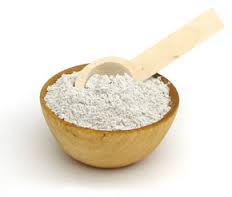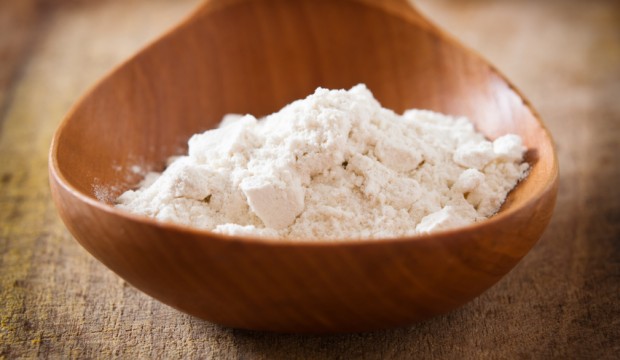By Anthoney J. Andersen – Steroidal.com
If you follow American statistics, then you would know that two big elements that people tend to obsess over is food and diet plans. Americans don’t seem to grasp the importance of a healthy diet, as they jam-pack their bodies with foods that are both high in calories and saturated fats.
According to the U.S. Department of Agriculture (USDA), Americans at the beginning of the 21st century began consuming more food and several hundred more calories per person per day than did their counterparts in the 1950s (when per capita calorie consumption was at the lowest level in the last century).
Unfortunately, with extreme weight gain, comes the scramble to find the best diet plan to help shred those unwanted pounds and recapture the healthy looking body you desire/once had.
A diet plan that has recently garnered national attention is known as the ‘Clay Diet’.
Celebrities like actress Shailene Woodley (Divergent Series, The Descendants, The Fault in Our Stars) has given the novel diet plan high praise in the recent months. The 22-year-old actress told talk show host David Letterman that she ingests clay as part of a detoxification diet.
 But how healthy and beneficial can ‘clay’ be? And are there long-term health risks accompanied by the diet?
But how healthy and beneficial can ‘clay’ be? And are there long-term health risks accompanied by the diet?
Follow along as we procure the facts and fiction surrounding this unusual diet regimen.
TOXIC BUILDUP
Detoxification (‘detox’) diets and procedures refer to the cleansing of harmful chemicals and toxins from your body – and for some – is a way to lose weight. According to WebMD, most detox diets promote herbs, pills, potions, colonics, and/or fasts to purge the body of impurities.
Detox diets can have many benefits on the body, but they can have many drawbacks as well. When you cleanse the body of waste, you’re also stripping the body of nutrients as well. Since many detox diets are low in calories, they run the risk of depriving the body of protein and fluids, which can lead to headaches, dehydration, and fatigue – and in some cases – can even lower metabolism.
CLAYNATION
According to Livestrong.com, the clay that is used in the clay detox diet is called bentonite clay, or montmorillonite – which contains a variety of minerals including calcium, aluminum, magnesium and potassium.
Marketed as the ‘healing clay,’ bentonite swells in the stomach when taken with water, which provides the body with a fuller sensation. As the clay expands in the dieter, it absorbs the contaminants in addition to liquid.
According to Naturalnews.com, every cell in the human body excretes waste material, which becomes harmful and poisonous to our bodies if it is allowed to stack up faster than it can be filtered out.
The most common symptoms of toxic buildup within the body are mental dullness, aching/stiff joints, high acidity and digestive problems with the stomach and colon.
“The legacy of 50 years of exposure to persistent man-made chemicals combined with the denigration of the food chain has increased our susceptibility to chronic degenerative disease and cancer,” said Kathryn Alexander, one of the leading experts in detoxification and dietary healing.
“By releasing the toxic burden of the body and restoring its nutritional status, we can change our internal environment and achieve good health,” added Alexander.
Paul Mackey, owner of Natures Cleansing Clay and the man behind the edible ‘living clay’ product – a ‘green swelling’ mass mined from the desert in California – says that the benefits of the clay’s full-body detoxification is, “Nothing short of amazing.”
“The clay builds up a person’s immune system, balances pH levels and allows the body to naturally heal itself and fight off future disease,” said Mackey.
Upon entering the body, the clay acts like a catalyst. A catalyst is any substance that works to accelerate a chemical reaction. The catalyst generally works by either changing the structure of a molecule, or by bonding to reactant molecules causing them to combine, react and release a product of energy.
“By absorbing toxins before they enter the bloodstream, clay reduces the overload of toxins that the liver and kidneys normally have to filter out,” said Alexander.
CLAY SAFETY
According to a 2005 study conducted by the Environmental Toxicology and The Institute of Environmental and Human Health at Texas Tech University in Lubbock, researchers tested 50 volunteers over a two-week period, giving them different amounts of a natural clay supplement.
Experts tested the volunteers’ blood and urine levels and concluded that products containing the clay were ‘relatively safe’ for human consumption. The study, however, did not address whether the clay was beneficial for detoxification purposes.
THE DOSAGE
Ran Knishinsky, author of The Clay Cure, recommends taking clay daily as a way to maintain a good, clean digestive system.
Below is a list of Knishinsky’s recommended daily dosage for the different forms of clay detoxification for healthy adults:
• Liquid clay: One to two ounces daily.
• Hydrated clay: One to two teaspoons daily.
• Clay baths: Use up to two cups of powdered clay. Get the water as HOT as you can, stirring the clay around until it dissolves. Then start adding cool water until you get the bath to your desired temperature.
Make sure that if you decide to embark on the liquid clay diet, that you drink eight to 10 glasses of water daily, in order to keep your body properly hydrated.
POSSIBLE SIDE EFFECTS
If you decide to use the internal form of clay, a few side effects that you may experience during your detox are intestinal discomfort. According to Livestrong.com, you can minimize these effects by making sure that you consume plenty of water daily, until the bentonite passes completely through your system.
During an initial detox, you may also experience headaches, muscle pain and joint stiffness, as stored toxins begin releasing from your system.
Also, keep in mind that the clay diet is responsible for removing toxic metals from your body, but in doing so, it also removes iron, which is a metal and essential to our health.
If you’re considering doing a cleanse of any kind – including the clay diet – it’s important that you consult your physician first, to make sure that the detox will not be detrimental to any ongoing health ailments that you may be suffering from.
Stay healthy.







